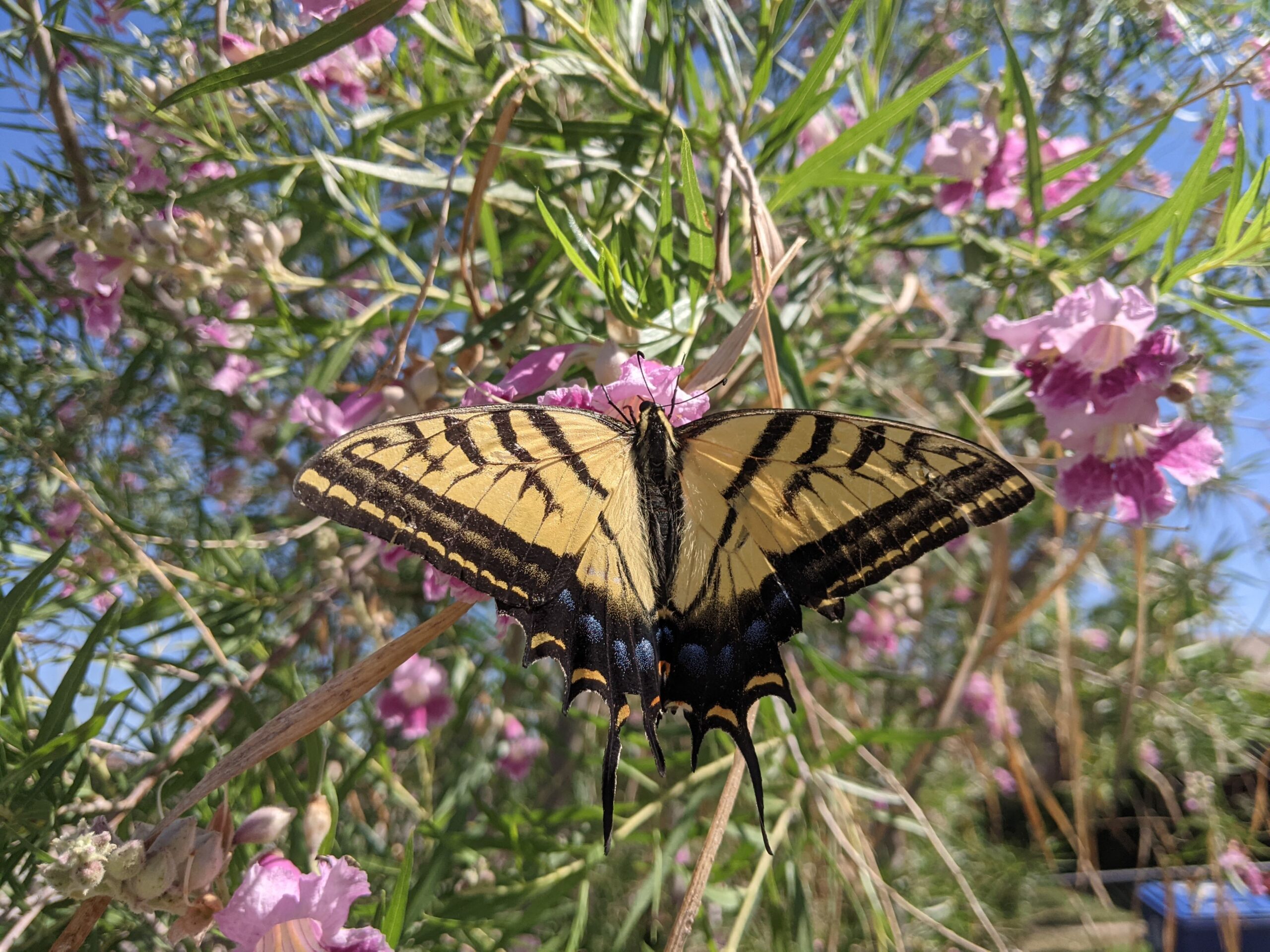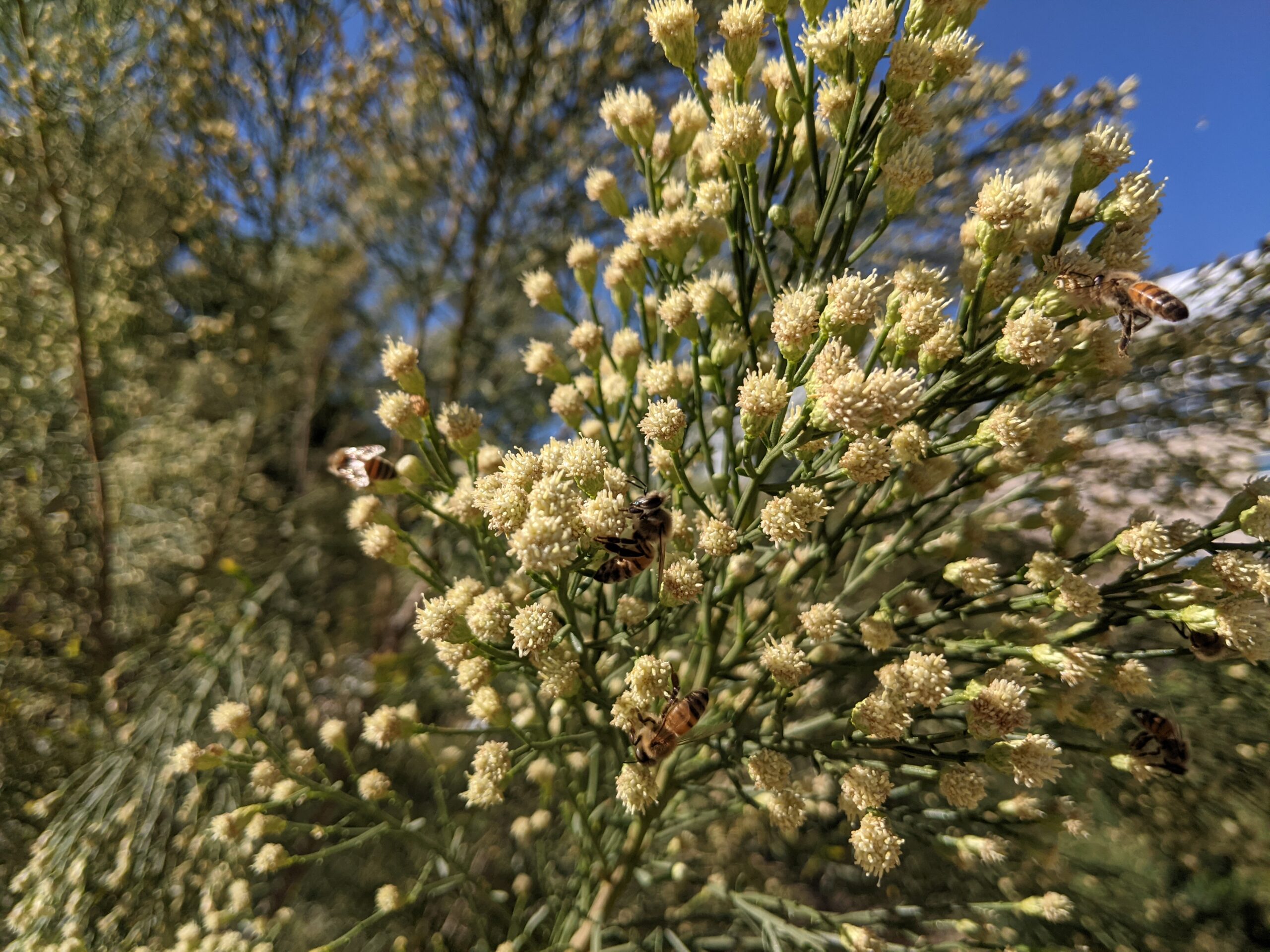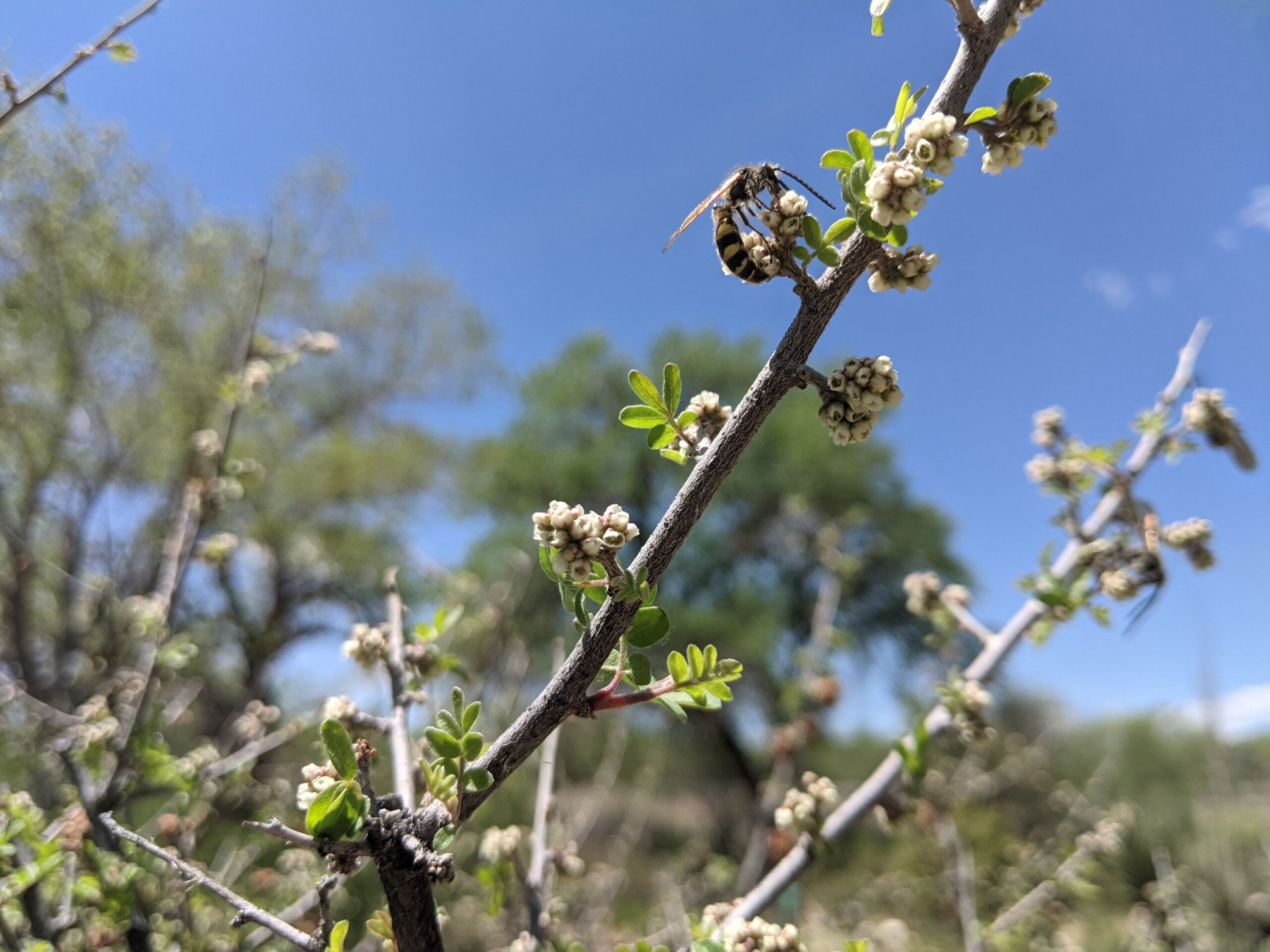
Desert willows provide nectar for pollinators like this two-tailed swallowtail.
Pollinators are an important part of our ecosystem. The pollination services of bees, wasps, butterflies, moths, flies, hummingbirds and bats are necessary for the reproduction of most flowering plants, including the fruits and vegetables we eat. Pollinators and other insects also contribute to the ecosystem by serving as food for a wide variety of other creatures.
Flowering trees provide nectar and pollen for pollinators to eat. Tree cavities provide shelter for bats and bees, and the leaves of native trees provide crucial food for caterpillars, which in turn feed birds.
To help your trees provide maximum support for pollinators:
- Choose native species (see the list below). Native pollinators have co-evolved with native trees and many cannot survive without a specific partner.
- Avoid insecticides and herbicides. Even neem oil can harm bees.
- Remove weed barriers. 70% of our native bees nest in the ground. This will also benefit your trees by improving water infiltration.
- Leave fallen leaves on the ground to decompose, or rake them into your compost. Pollinators are spending the winter in those leaves!
- Weed thoughtfully. Native wildflowers provide nectar when your trees aren't in bloom.
- Encourage your neighbors to follow the same practices.
New Mexico native trees with exceptional pollinator value:
Medium to large trees:
- Desert Willow (Chilopsis linearis)
- Netleaf Hackberry (Celtis reticulata)
- Gray Oak (Quercus grisea)
- Gambel Oak (Quercus gambelii)
- Chokecherry (Prunus virginiana)
- Screwbean Mesquite (Strombocarpa pubescens)
- Soapberry (Sapindus drummondii)
- Gooding's Black Willow (Salix. goodingii.)
- Rio Grande Cottonwood (Populus deltoides wislizenii.)
Small trees:
- New Mexico Olive (Forestiera pubescens)
- Seepwillow (Bacharis salicina & B. salicifolia)
- Desert Broom (Baccharis sarothroides)
- Desert Scrub Oak (Quercus turbinella)
- Native Plum (Prunus americana)
- New Mexico Locust (Robinia neomexicana)
- Western honey mesquite (Neltuma odorata)
- Catclaw Acacia (Senegalia greggii)
Shrubs that can be pruned into trees:
- Native sumacs (Rhus sp.)
- Cliffrose (Purshia stansburyana)
- Agarita (Berberis haematocarpa)
- Creosote bush (Larrea tridentata)
- Coyote Willow (Salix exigua)

Desert broom provides abundant nectar for honeybees as well as native pollinators.

Littleleaf sumac's spring brooms are highly attractive to pollinators like this wasp.
Plant Lists:
- ABQ Backyard Refuge Plant List
- Xerces Society Plant Lists
- Audobon bird-friendly native plants (filter by trees!)
More resources:
- ABQ Backyard Refuge Program
- Burque Bee City
- Xerces Society Pollinator Resource Center
- Xerces Society NM contact
Learn more about how trees are essential habitat for pollinators in the articles below.
